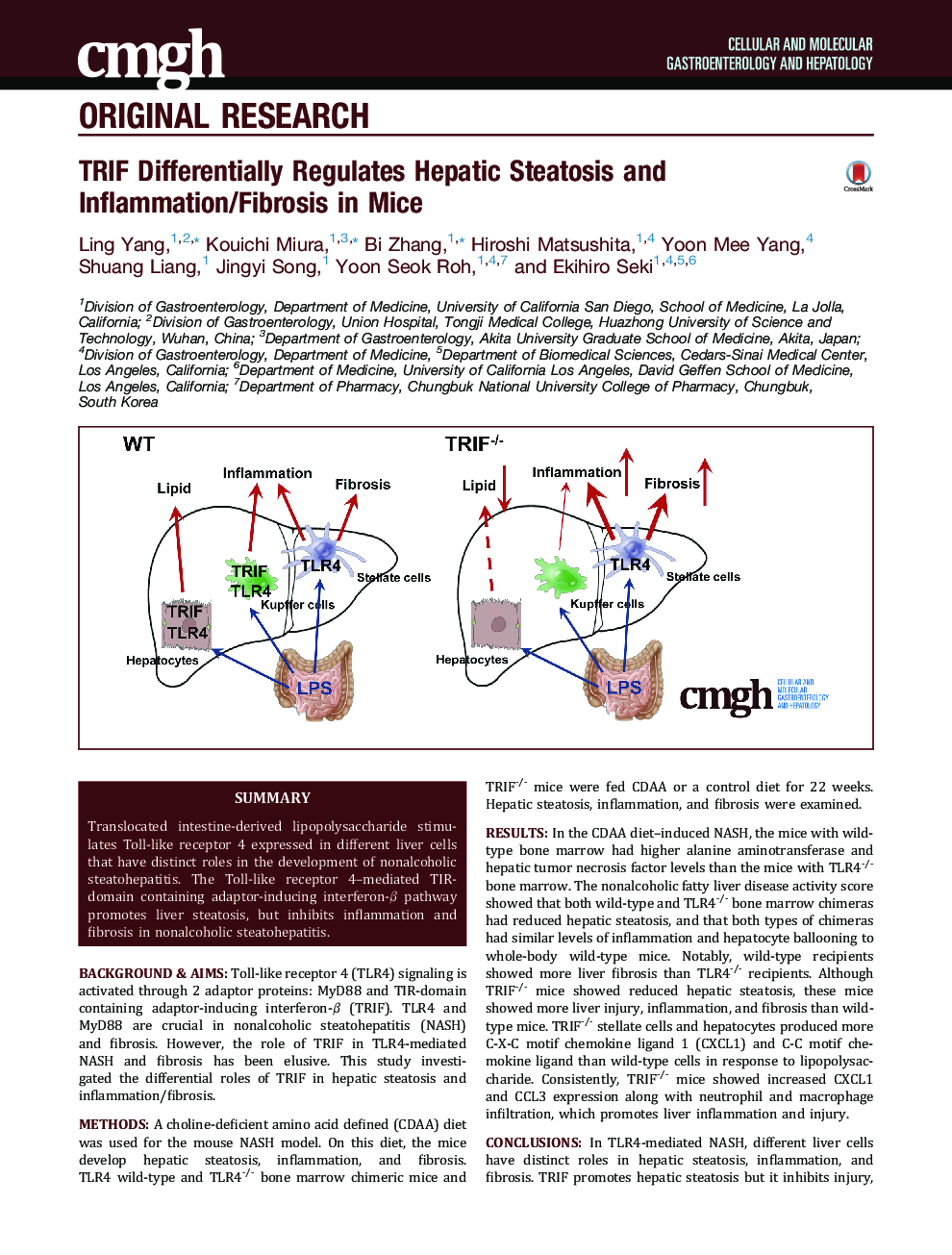| کد مقاله | کد نشریه | سال انتشار | مقاله انگلیسی | نسخه تمام متن |
|---|---|---|---|---|
| 5517232 | 1400956 | 2017 | 15 صفحه PDF | دانلود رایگان |

Background & AimsToll-like receptor 4 (TLR4) signaling is activated through 2 adaptor proteins: MyD88 and TIR-domain containing adaptor-inducing interferon-β (TRIF). TLR4 and MyD88 are crucial in nonalcoholic steatohepatitis (NASH) and fibrosis. However, the role of TRIF in TLR4-mediated NASH and fibrosis has been elusive. This study investigated the differential roles of TRIF in hepatic steatosis and inflammation/fibrosis.MethodsA choline-deficient amino acid defined (CDAA) diet was used for the mouse NASH model. On this diet, the mice develop hepatic steatosis, inflammation, and fibrosis. TLR4 wild-type and TLR4-/- bone marrow chimeric mice and TRIF-/- mice were fed CDAA or a control diet for 22 weeks. Hepatic steatosis, inflammation, and fibrosis were examined.ResultsIn the CDAA diet-induced NASH, the mice with wild-type bone marrow had higher alanine aminotransferase and hepatic tumor necrosis factor levels than the mice with TLR4-/- bone marrow. The nonalcoholic fatty liver disease activity score showed that both wild-type and TLR4-/- bone marrow chimeras had reduced hepatic steatosis, and that both types of chimeras had similar levels of inflammation and hepatocyte ballooning to whole-body wild-type mice. Notably, wild-type recipients showed more liver fibrosis than TLR4-/- recipients. Although TRIF-/- mice showed reduced hepatic steatosis, these mice showed more liver injury, inflammation, and fibrosis than wild-type mice. TRIF-/- stellate cells and hepatocytes produced more C-X-C motif chemokine ligand 1 (CXCL1) and C-C motif chemokine ligand than wild-type cells in response to lipopolysaccharide. Consistently, TRIF-/- mice showed increased CXCL1 and CCL3 expression along with neutrophil and macrophage infiltration, which promotes liver inflammation and injury.ConclusionsIn TLR4-mediated NASH, different liver cells have distinct roles in hepatic steatosis, inflammation, and fibrosis. TRIF promotes hepatic steatosis but it inhibits injury, inflammation, and fibrosis.
300
Journal: Cellular and Molecular Gastroenterology and Hepatology - Volume 3, Issue 3, May 2017, Pages 469-483